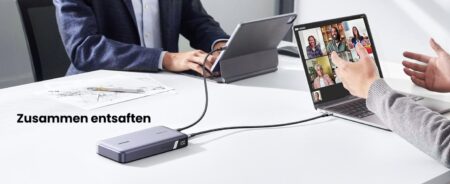According to a recent market study, 94% of enterprises globally use cloud platforms and services. The growing popularity of cloud platforms has made them an attractive target for cybercriminals and hacktivists. Hence, organizations need to pay attention to cloud security platform and follow best practices for ensuring complete security.
Cloud computing refers to the ways of securing platforms that change with time. Here are the best practices of cloud security in 2021 that you need to follow.
Eliminate All Identity Risks
Identity is a system followed in cloud computing used to assess user characteristics specific to them. These characteristics are also referred to as authentication factors. Every identity in the cloud has permissions to access specific cloud resources. It acts as a baseline to determine the characteristics and permissions of the user.
Cloud computing platforms allow users to access these platforms from any place that has Internet access. It helps in enhancing productivity but increases security risks. You need to be familiar with different identity risks like orphaned accounts, shared and service accounts, unauthorized changes, toxic combinations, over-provisioned access, and unreviewed items.
According to cloud security platform experts, you can implement 3rd party identity and data security platforms to eliminate all identity risks. The identity security tools in the SaaS help uncover identity and data relationships between all objects. The SaaS solution allows businesses to enforce the principle of least privilege that works to eliminate identity risks that plague cloud platforms.
Protect Crown-Jewel Data
Data is considered the most valuable asset for any organization. Every day, business systems generate tons of data in different processes. The industry regulatory compliance requires businesses to employ high-level security measures to protect crown jewel data. Here are some strategies you can implement to protect crown jewel data.
Discover – Not every data generated by the business system can be categorized as crown jewel data. Organizations need to use 3rd party SaaS solutions to discover different data types generated by their systems and classify data as per information they hold.
Classify– the data should be classified as low-level, mid-level, and high-level depending on its importance for business continuity and compliance requirements. Once data is classified, the system should specify the correct data stores to keep the information. The sensitive nature of the data should be an essential factor when determining the data store. For example, data type holding personal information cannot be stored in public data stores that are easily accessible to everyone.
Lockdown– once crown-jewel data is identified, the data storage system should store it securely and track its movement across cloud infrastructure. The crown jewel data should be locked down, and the principle of least access should be implemented to keep the data safe.
Implement Intelligent CSPM
It is a common practice followed by organizations to use multiple cloud platforms. A multi-cloud strategy is beneficial for businesses as some cloud service providers offer some selected services than others. It allows businesses to use the best cloud services for crucial business processes. However, multiple cloud strategies come with unique security challenges.
Cloud security posture management is a process that automates a cloud security platform.
The CSPM checks identity relationships, data movement, data sovereignty across all cloud platforms. The SaaS solutions can monitor all relationships in the cloud and ensure your organization’s data access, and storage policies conform to HIPAA, GDPR, and other compliance mandates.
Governance Automation
Cloud computing platforms are required to provide a secure environment to users, applications, services, and data in the cloud. Here, the cloud security governance is a critical factor to ensure effective and efficient security management of all digital assets in the cloud.
The cloud platform has 1000s of users and services accessing data and performing various tasks. The platform has 1000s of network nodes, data access rules, and user configurations that need to be done correctly. It is almost impossible to analyze every configuration setting manually, and most organizations go by the default settings without considering the risks involved.
You can overcome cloud security governance issues by employing 3rd party identity and cloud security solutions. The governance automation engine allows customized monitoring of the cloud infrastructure and workloads. The new-age security tools can integrate teams via organized actions, alerts, and analysis and show the teams the best ways to use the public cloud.
The governance automation engine encourages DevOps teams to adopt a “Shift Left” approach in the development and gives the team complete visibility and control over the staging and production workloads. The governance automation also helps the DevOps team integrate the API architecture for continuous delivery/continuous deployment.
To sum up, these are the best security practices you need to follow to keep cloud accounts secure.










